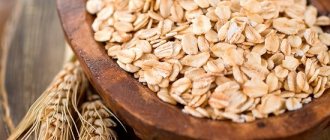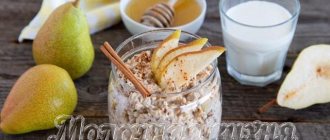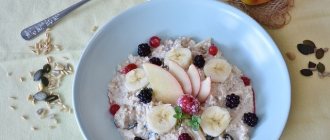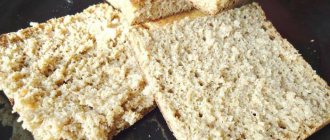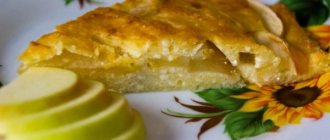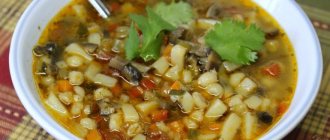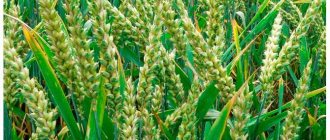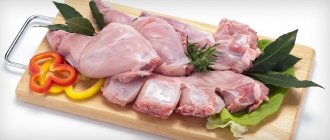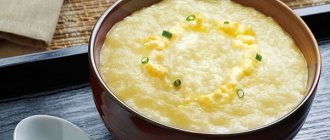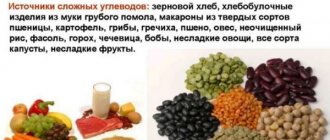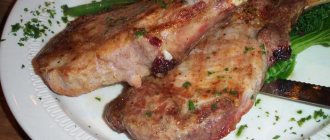What is spelled
Content:
- What is spelled
- Benefits and Nutrition Facts
- Role for the body
- Medicinal properties of spelled
- Application in the food industry
- Application in cosmetology
- How to choose and store correctly
Spelled is a relict type of wheat, which is the “great-grandmother” of modern durum grain varieties. This grain has been consumed by people for thousands of years all over the world. And today it serves as a component of dishes in Middle Eastern, Ethiopian and Mediterranean cuisines. By the way, there is an opinion that it was in the Middle East that wild spelt was first “domesticated”. But spelled, with which Triticum dicoccum is often confused, is also an ancient cereal, but it is the ancestor of modern soft wheat varieties.
Spelled grains are recognized by several layers of film that cover the seeds. These are the so-called spikelet scales that grow to the grain (which is not present in modern varieties of durum and soft wheat). This makes spelled more difficult to grind into flour. Meanwhile, biologists have taken care of breeding naked emmer, the grains of which are devoid of the usual film for the culture.
Spelled was once one of the most cultivated plants. This cereal was grown by residents of the Mediterranean, Phenicia, Ancient Egypt, the North Caucasus, and the Volga region. In the Roman Empire, einkorn served as a daily diet for the poor, but the rich did not refuse this product either. Moreover, the Italians called this cereal the wheat of the pharaohs, because spelled was also a huge success in Egypt. However, over time, the popularity of Einkorn began to wane. Humanity has learned about other grains that are more easily processed. And by the twentieth century, this culture seemed to be completely forgotten. Modern varieties took its place. And now the popularity of spelled is growing again. And all because, as it turned out, it contains less gluten, which makes this grain an accessible product for people with celiac disease.
Spelled vs wheat: pros and cons of grains
Proponents of spelled believe that the grain has greater nutritional value and flavor than wheat because its tough outer shell protects the kernel. In this regard, the benefits of spelled are obvious. Although, it should not be eaten by some people with gluten intolerance. Although, to make spelled bread you need special preparation, since these grains contain gluten. Spelled has a pleasant and distinctive nutty taste, milder than wheat, although its opponents say it is unlikely to revolutionize human health science. The grain has more protein and vitamins than wheat and requires less fortification than regular flour, so spelled's beneficial properties contribute to its promotion in the nutritional arena.
In appearance, spelled is largely reminiscent of wheat; it also has a dense cluster of kernels growing on an elongated stem. When the harvest is ready, the stems turn golden and begin to bend under the weight of the heavy spelled kernels. It is harvested in the same way as wheat, and the grain is separated from the chaff. The latter can be reused in the field for mulch, for construction projects, animal feed or for bedding.
Unlike wheat, spelled has a complex outer kernel and husk, however, it requires more effort to extract the inner kernel. The grain shell can only be removed using special equipment. The husk is believed to act as a protection for the kernel during transport, which contributes to the freshness and cleaner appearance of the spelled, especially when it is ground into flour. More importantly, the shell protects the kernel from many harmful insects and pests, so spelled can be grown without the use of pesticides and that is why spelled cereal is not without beneficial properties.
Just like wheat, spelled is ground into flour containing “specks” of whole grains. Many bakers use spelled flour in such a way as to fully obtain all the nutrients from the grain. In most recipes, this flour can be used instead of regular flour, although some adjustments are still necessary. If you want to avoid the characteristic nutty taste, it is better to use wheat flour.
Benefits and Nutrition Facts
Gourmets adore this grain for its special taste with nutty notes. Nutritionists pay attention to spelt because of its small amount of gluten. This grain is a healthy source of protein, fiber and many nutrients such as magnesium and iron. By the way, einkorn contains much more minerals than other refined grains.
Despite the fact that many people today are not even aware of the existence of spelled, this type of wheat is extremely healthy.
A serving of spelled porridge will provide impressive doses of proteins, B vitamins, zinc, and iron. In total, the list of nutritional components consists of more than ten vitamins and minerals. Like other whole grains, spelled is an important source of complex carbohydrates, particularly fiber. The grains of this crop have more dietary fiber than the more popular rice or quinoa. Nutritional components per 100 g raw product
| Calorie content | 320 kcal |
| Squirrels | 10 g |
| Fats | 3 g |
| Carbohydrates | 64 g |
| Cellulose | 6 g |
| Calcium | 40 mg |
| Iron | 3.6 mg |
| Sodium | 2 mg |
| Magnesium | 60 mg |
| Zinc | 2 mg |
| Niacin | 4 mg |
| Thiamine | 0.2 mg |
Recipe No. 4. Hemp sweets made from dates and sesame seeds
What you need for cooking
- Hemp flour – 3 tbsp.
- Fresh and soft dates – 10 pcs.
- Sesame seeds – 1 tbsp.
- Coconut flakes – 1 tbsp.
How to cook
Mash the pitted dates in a dish until pureed. Add sesame seeds, hemp flour to it and mix well (you can use your hands).
From the resulting mixture we form candies in the form of small balls and roll each of them in coconut flakes.
Place the finished candies in the freezer for 15-20 minutes and... voila!
Amaranth flour, 500 gr, polezzno
306 ₽
Dietary supplement NOT A MEDICINE
While a tea party with our sweets is being prepared... In this recipe we use hemp flour. In Asian cuisine, it, along with hemp seeds, has long been used in cooking, including for making sweets. And they turn out not only tasty, but also very healthy! Don’t worry, hemp flour does not contain prohibited substances, but it contains a lot of useful substances that help slow down the aging process, cleanse the body of toxins, maintain high stress resistance, intestinal microflora, normal blood sugar levels, cardiac activity, vascular elasticity... Here we will put an ellipsis, since the list of beneficial properties of hemp can be continued for a long time.
Role for the body
Rich Source of Fiber
Very high amounts of fiber make spelled a food that is good for the heart and digestion, blood sugar regulation and insulin production. Researchers estimate that emulberry contains almost 4 times more cholesterol-lowering compounds than white rice.
Also being an unprocessed grain and therefore high in fiber, farro provides a quick and long-lasting feeling of satiety. According to these indicators, einkorn is noticeably ahead of other types of grain, in particular refined grain.
Scientists have long proven that regular consumption of foods rich in fiber helps cleanse the arteries of plaque that causes atherosclerosis. Another benefit of dietary fiber obtained from spelled is that it improves digestion. Firstly, the body needs fiber for faster elimination of waste products. Secondly, this dietary component is important for maintaining healthy intestinal microflora (fiber is “food” for the beneficial bacteria that inhabit the large intestine).
Grain for immunity and heart
Like other whole grains, spelt provides the body not only with fiber, but also with resistant starch, oligosaccharides and antioxidants, including phenolic compounds, necessary for the prevention of various diseases. Research shows that people who eat more whole grains are more likely to develop diabetes, obesity, and cardiovascular disease.
Scientists also found so-called cyanogenic glucosides in this grain - substances that strengthen the immune system and regulate cholesterol and blood sugar levels. For this reason, nutritionists increasingly advise combining whole grains, such as spelled, with meat, fatty or very salty foods, rather than refined cereals.
Good source of protein
But in addition to its impressive servings of fiber, this ancient grain also contains plenty of protein. These grains provide about the same amount of plant protein as legumes, which is significantly more than other whole grains.
Interesting information for vegetarians: the combination of spelled and other plant foods will allow you to form the so-called complete protein, that is, collect a full complex of amino acids essential for humans. Peas, lentils, beans and other legumes have a similar effect. By the way, spelled contains 18 essential amino acids.
Vitamins in grains
Vitamins in spelled are represented mainly by substances of group B. In particular, thanks to emmer, it is possible to restore reserves of vitamin B3 (niacin), which is necessary for proper metabolism. It is this vitamin that is responsible for converting proteins, fats and carbohydrates from food into energy. Vitamin B2, which is also found in cereals, is crucial for the formation and functioning of the reproductive system. In addition, B-substances are necessary for brain health and proper functioning of the nervous system.
Source of antioxidants
It is common knowledge that fruits and vegetables are the best sources of antioxidants. Meanwhile, unprocessed grains also contain these beneficial compounds, especially lignins. Lignins are biologically active phenolic compounds found in plants. Scientists say that these substances can reduce inflammation, they are important for strengthening the heart, lowering blood pressure and cholesterol levels. It is believed that lignins are a component responsible for longevity.
Supplies iron, magnesium and zinc
Spelled is a good source of nutrients. In particular, this cereal can be consumed as a product that restores the balance of iron, zinc and magnesium, which are important for the body. Iron is necessary for humans as an element that prevents anemia and provides energy. Zinc is critical for brain function, is responsible for the health of the body at the cellular level, and is also necessary for the creation of DNA. Magnesium is one of the most important components that prevents cramps, improves sleep and digestion, and a deficiency of this nutrient can lead to migraines.
Bulgur, spelt, quinoa: the benefits and harms of rare cereals
Natalya Fadeeva
nutritionist-endocrinologist, doctor of medical sciences
– Let's start with bulgur - a cereal made from durum wheat. Bulgur is a source of carbohydrates, vegetable protein and fiber. It contains a lot of potassium, magnesium, B vitamins, PP, so this cereal is useful for diseases of the heart and blood vessels, problems with the nervous system. Due to the fact that bulgur contains coarse dietary fiber (fiber), dishes made from this cereal help cleanse the walls of the stomach and intestines. And finally, bulgur has a low glycemic index, so it is recommended to be included in the diet of diabetics.
The calorie content of raw bulgur is 350 kcal per 100 g. The calorie content of boiled (in water) bulgur is 83 kcal per 100 g.
Who is it contraindicated for?
People with gluten intolerance. During the period of exacerbation of gastritis, as well as for those who have problems with the gastrointestinal tract - due to the large amount of fiber contained in bulgur.
What products to combine with?
Best with vegetables. For example, you can make a salad from any combination you like: cucumbers, tomatoes, onions, herbs, celery, bell peppers; add bulgur prepared according to the recipe on the package to the salad, season with vegetable oil. You can add olives, feta or cottage cheese to the salad. Pairs well with fish. You can also replace rice with bulgur in stuffed peppers and pilaf.
Recipe: Tabbouleh Salad with Bulgur
Ingredients
: boiled bulgur – 200 g, fresh tomatoes (2–3 pcs.) or sun-dried (10–15 pcs.), butter – 1 tbsp. l., garlic – 1 clove, feta – 50 g, fresh herbs – cilantro, basil, mint; lemon juice - 1 tsp, salt, ground pepper to taste.
Preparation
Prepare bulgur as directed on package, add butter, cool. Add chopped tomatoes and chopped herbs. Season with lemon juice, salt and pepper.
Barley grits
Barley (barley) grits are obtained from crushed barley. Rich in B vitamins and vitamins E and PP. If you regularly eat barley porridge, it will have a positive effect on the cardiovascular and nervous system, and will also improve the condition of the skin. Barley contains a lot of fiber. This cereal has a low glycemic index. Nutritionists recommend barley porridge with water for those who suffer from obesity, people with diabetes and those who have problems with peristalsis (improves intestinal motility).
The calorie content of raw barley is 324 kcal per 100 g of product. The calorie content of boiled (in water) barley is on average 76 kcal per 100 g.
Who is it contraindicated for?
People with gluten intolerance and exacerbation of gastrointestinal diseases.
What products to combine with?
With vegetables, mushrooms, herbs, butter (vegetable and butter) and milk. Barley porridge can be served with fruit, nuts and honey, or cooked with pumpkin.
Recipe: Barley Cakes
Ingredients
: barley – 1–1.5 cups, egg – 3 pcs., wheat flour – 3 tbsp. l., milk - 1 glass, salt, sugar to taste.
Preparation
Prepare barley as directed on the package and let cool. Beat eggs with milk, salt and sugar. Gradually add barley and flour to form a thick porridge consistency. Fry in a hot frying pan without oil.
Quinoa
Quinoa is considered an important source of plant protein, just like buckwheat. In addition, quinoa contains a lot of dietary fiber, most of which is indigestible, therefore, it is excreted from the body, cleansing the intestines. Quinoa contains B vitamins. The cereal is also rich in iron, magnesium, phosphorus, zinc and manganese. Nutritionists recommend including quinoa dishes in your diet if there is a lack of minerals and B vitamins. Quinoa is suitable for people with gluten intolerance. The product is also useful for those who are overweight. Quinoa is also recommended for people with diabetes, because this grain helps lower blood sugar levels.
The calorie content of raw quinoa is 368 kcal per 100 g of product. Calorie content of boiled (in water) quinoa is 120 kcal per 100 g.
Who is it contraindicated for?
For exacerbations of gastrointestinal diseases.
What products to combine with?
It is good to cook with vegetables, mix with salad, combine with poultry, fish, and meat.
Recipe: Quinoa and Eggplant Stuffed Peppers
Ingredients
: 6 small sweet peppers, quinoa - 1 cup raw cereal, vegetable broth - 2 cups, garlic - 4 cloves, eggplant - 1 pc., zucchini (or zucchini) - 1 pc., onions - 1 pc., tomatoes - 4 pcs., chopped mint, parsley - 1 cup.
Preparation
Prepare quinoa as directed on package. Drizzle the bell pepper halves with olive oil and sprinkle both sides with salt and black pepper. Roast cut side down until skins begin to char and peppers are tender, about 20 minutes. Cool the peppers to room temperature and place them in a baking dish, cut side up. In a skillet over medium-high heat, heat 3 tbsp. l. olive oil, add garlic, finely diced eggplant, zucchini (or zucchini) and onion. Season with salt and pepper. Fry until half cooked, 10–12 minutes. Add herbs and tomatoes, mix with quinoa. Fill the pepper halves with the filling and drizzle with olive oil. Before serving, reheat in the oven at 190°C until the peppers are warmed through.
Spelled
Spelled is also a type of wheat crop. Contains starch, vegetable protein and a lot of fiber. A source of potassium, magnesium, B vitamins. Suitable for those with diabetes because it normalizes blood sugar levels. Nutritionists recommend preparing dishes from spelled, as it improves the functioning of the digestive system. It is also suitable for those who want to lose weight, because spelled gives a feeling of fullness that lasts for quite a long time.
The calorie content of raw spelled is 337 kcal per 100 g of product. The calorie content of boiled (in water) spelled is 127 kcal per 100 g.
Who is it contraindicated for?
For acute gastrointestinal diseases and gluten intolerance (celiac disease).
What products to combine with?
With vegetables and protein products such as poultry, fish, meat, you can add them to salads or soup.
Recipe: sweet spelled with nuts and fruits
Ingredients
: spelled – 2 cups, walnuts – 1 cup, honey – 2–4 tbsp. l., prunes – 8–10 pcs., pomegranate – 1 pc., orange – 1 pc., tangerine – 1 pc., zest of 1 lemon.
Preparation
Prepare spelled as directed on package. Pour the broth into a separate glass, cool and prepare the dressing. Grind the nuts in a blender, separate the pomegranate into grains, divide the orange and tangerine into slices and chop, chop the prunes finely. Dissolve honey in spelled broth. Mix chilled cereal with lemon zest, fruit, and season with honey infusion.
Flax seeds
Flax is an oilseed crop; its seeds contain more than 40% fat, including omega-3 and omega-6, which are beneficial for cardiovascular diseases and high cholesterol. Flax seeds also contain vegetable protein and a lot of fiber. Fiber improves intestinal motility. The seeds contain vitamins B, A, E, magnesium, potassium, phosphorus, molybdenum, copper. Flax seed shell is the richest plant source of lignans - natural phytoestrogens, which reduce the risk of developing hormone-dependent forms of breast, uterine and prostate cancer. In addition, flax seeds are good for the heart, blood vessels, digestion, weight loss, and for women in menopause.
The calorie content of dry flax seeds is 534 kcal per 100 g of product. The calorie content of boiled flax seeds is 15.8 kcal per 100 g.
Who are they contraindicated for?
For exacerbations of gastrointestinal diseases.
Recipe: flax seed jelly
Ingredients
: flax seeds – 100 g, any berries – 100 g, boiled water – 1 l.
Preparation
Pour water over the flax seeds and berries and leave to steep in a cool place overnight. Then grind with a blender and drink throughout the day.
What grains can be harmful to health?
For people with gluten intolerance (celiac disease), the following cereals are contraindicated: wheat (bulgur, spelt), rye, barley, and partially oats. For celiac disease you can eat: corn, rice, amaranth, quinoa, buckwheat.
For which diseases which cereals are not recommended?
- For obesity and type 2 diabetes, semolina and refined rice, as well as baked goods made from any cereal, are not recommended.
- In case of exacerbations of diseases of the digestive system, the following are not recommended: barley, millet cereals, crushed buckwheat, brown rice, quinoa, pearl barley, wheat, any whole grain cereals - due to the irritating effect on the walls of the stomach and intestines, as well as porridge with milk, since milk is heavy digested by the digestive system. In this case, it is good to eat oatmeal, rice made from starch grains (if you are prone to diarrhea), and white dried wheat bread.
- For constipation, rice is contraindicated. In this case, it is good to eat whole grain cereals with vegetables.
Thank you for reading this text to the end. Follow the news, subscribe
mail.
When quoting this material, active link to the source
required.
Medicinal properties of spelled
According to American researchers, spelled is good for:
- reducing the risk of asthma, stroke, diabetes, cardiac diseases;
- regulation of cholesterol levels;
- blood pressure stabilization;
- regulation of hormonal levels;
- maintaining a stable weight;
- improvement in diseases of the digestive system;
- maintaining bone health;
- getting rid of inflammation.
Application in the food industry
Spelled has a specific taste that is difficult to confuse with regular wheat flour. Yes, and spelled flour cannot be used as an alternative to wheat flour. Since there is practically no gluten in spelled, baking from it according to the traditional recipe will not work - the finished products will crumble.
Spelled is usually offered for sale in several forms:
- grain for germination;
- sprouted grain;
- cereals (crushed grains);
- spelled flour.
Spelled grain is suitable for making risotto and is added to soups and sauces. Pairs well with olive oil, herbs and vegetables. In some cases, einkorn can replace rice, buckwheat, barley and other grains. This product is also suitable for preparing desserts or breakfasts from spelled, milk, honey and walnuts.
Our ancestors baked bread from spelled flour. True, according to a special recipe, which differs from the modern one. Baking made from einkorn is not so airy and quickly loses its freshness, however, crackers made from it are ideal.
Sprouted spelled is as healthy as other types of “revitalized” grains. It has many beneficial properties and has found its use in the cuisines of different nations.
Spelled bread
To bake this bread, which is completely different from the product we buy in stores every day, you will need:
- spelled flour (500 g);
- warm water (300 ml);
- dry yeast (1 sachet);
- brown sugar (1 tbsp);
- olive oil (2 tbsp);
- salt (1 tbsp);
- sesame.
In a large bowl, mix 2 tablespoons flour, water, yeast, sugar and leave for 15 minutes until the mixture is foamy. Then add olive oil and remaining flour. Knead the dough and leave it, covered with a clean towel, for 40 minutes in a warm place. After this, put the dough in a pan (or a special form), which is pre-greased with oil and sprinkled with sesame seeds. Make a small cut on top of the dough (according to ancient tradition, this should be a cross). Bake in an oven preheated to 180 degrees for an hour. When the bread is ready, wrap it in a towel and let it rest for about 15 minutes. And now it’s time to try spelled bread - the main food of our ancestors.
Indications for consumption of spelled dishes
Spelled will only benefit any healthy person; it is an excellent product for the prevention of many diseases. If any organs or systems are malfunctioning, porridges and baked goods made from wild wheat grains can become an additional healing factor.
Of course, porridge cannot cure a serious illness, but this dish will saturate the body with useful components, cleanse it of toxins, after which medications will begin to act more effectively.
Spelled well supports a person in the treatment of the following pathologies:
- diabetes;
- diseases of the digestive tract;
- pathologies of the heart and blood vessels;
- obesity;
- metabolic disorders;
- problems with skin, hair and nails.
European chefs prepare many baked goods from spelled. Women appreciated the delicious pies and pancakes that are safe for their figure. Russian bakers have not yet adapted to spelled flour, but we can hope that soon healthy baked goods will appear on the shelves of our stores. Perhaps manufacturers are afraid of the fact that such products quickly become stale.
Biologically active substances in wild grain are included in the functioning of the hormonal system. The production of testosterone, which is necessary for the development of the male reproductive system, increases. Fat turns into muscle, the body becomes more prominent. With good production of male hormones, sex life becomes more active. Often representatives of the stronger sex notice that every year their intimate life becomes dimmer and worse. Don’t wait for these symptoms to appear; start from a young age consuming foods that are beneficial for the production of hormones, including spelled porridge.
The list of permitted products is significantly reduced by pancreatic diseases. To avoid girdling pain after a feast, people are forced to eat light food, mainly porridge. Spelled will provide the diseased organ with many useful and necessary substances, but it is difficult to digest. During exacerbations, it is better to give up wild wheat; the rest of the time, you can carefully try a small portion. In order not to provoke a new attack of the disease, it is advisable to consult a doctor before introducing any unfamiliar product into your diet.
Application in cosmetology
Spelled can be successfully used not only in cooking, but also as a cosmetic product. One of the most common uses is making scrubs. The grains are ground in a coffee grinder, a little sour cream is added and applied to the skin with massage movements. This home remedy will help get rid of dead epidermal cells, smooth out fine wrinkles, and also improve blood supply to the facial skin.
It is also easy to prepare a refreshing mask from this porridge. This cosmetic product will help improve your facial contour. Mix boiled spelled with sour cream and a raw chicken egg. Apply the still warm paste to your face and neck. Keep for about 20 minutes. They say that after the third procedure the result will become very noticeable.
Well, as in the case of pearl barley, rice or other grains, spelled water is extremely beneficial for the face. It can be used for washing and as a tonic. Preparing this remedy is not difficult. Moreover, there are 2 ways to prepare spelled water. You can fill the grains with plain water and leave overnight. Or boil a little eminkorn in a glass of water.
Tips for cooking spelled
Improperly prepared spelled will not be beneficial, but harmful to the body. Before cooking, rinse the grain thoroughly under running water to remove all excess dirt and debris.
Soak the spelled in water for eight hours or overnight. Before cooking, rinse it again and drain the water.
Add three parts water for every one part spelled and bring to a boil. Once the porridge boils, reduce the heat and simmer for about one hour.
Spelled can be eaten as a side dish instead of rice or potatoes. It can also be used to make delicious bread or buns. Many people are also concerned about the question of how often they can consume spelled porridge. Like all grains, it is best to eat it in the morning and no more than once a day.
